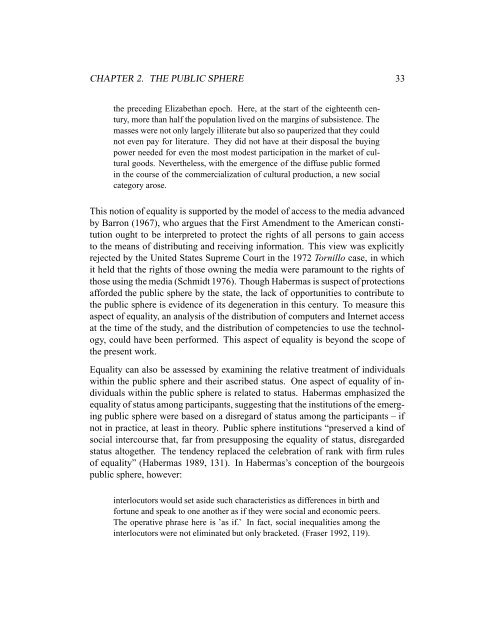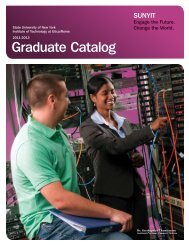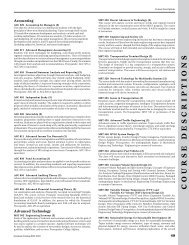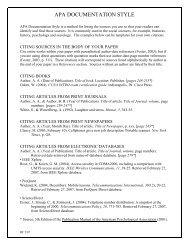Expanding the Public Sphere through Computer ... - ResearchGate
Expanding the Public Sphere through Computer ... - ResearchGate
Expanding the Public Sphere through Computer ... - ResearchGate
You also want an ePaper? Increase the reach of your titles
YUMPU automatically turns print PDFs into web optimized ePapers that Google loves.
CHAPTER 2. THE PUBLIC SPHERE 33<br />
<strong>the</strong> preceding Elizabethan epoch. Here, at <strong>the</strong> start of <strong>the</strong> eighteenth century,<br />
more than half <strong>the</strong> population lived on <strong>the</strong> margins of subsistence. The<br />
masses were not only largely illiterate but also so pauperized that <strong>the</strong>y could<br />
not even pay for literature. They did not have at <strong>the</strong>ir disposal <strong>the</strong> buying<br />
power needed for even <strong>the</strong> most modest participation in <strong>the</strong> market of cultural<br />
goods. Never<strong>the</strong>less, with <strong>the</strong> emergence of <strong>the</strong> diffuse public formed<br />
in <strong>the</strong> course of <strong>the</strong> commercialization of cultural production, a new social<br />
category arose.<br />
This notion of equality is supported by <strong>the</strong> model of access to <strong>the</strong> media advanced<br />
by Barron (1967), who argues that <strong>the</strong> First Amendment to <strong>the</strong> American constitution<br />
ought to be interpreted to protect <strong>the</strong> rights of all persons to gain access<br />
to <strong>the</strong> means of distributing and receiving information. This view was explicitly<br />
rejected by <strong>the</strong> United States Supreme Court in <strong>the</strong> 1972 Tornillo case, in which<br />
it held that <strong>the</strong> rights of those owning <strong>the</strong> media were paramount to <strong>the</strong> rights of<br />
those using <strong>the</strong> media (Schmidt 1976). Though Habermas is suspect of protections<br />
afforded <strong>the</strong> public sphere by <strong>the</strong> state, <strong>the</strong> lack of opportunities to contribute to<br />
<strong>the</strong> public sphere is evidence of its degeneration in this century. To measure this<br />
aspect of equality, an analysis of <strong>the</strong> distribution of computers and Internet access<br />
at <strong>the</strong> time of <strong>the</strong> study, and <strong>the</strong> distribution of competencies to use <strong>the</strong> technology,<br />
could have been performed. This aspect of equality is beyond <strong>the</strong> scope of<br />
<strong>the</strong> present work.<br />
Equality can also be assessed by examining <strong>the</strong> relative treatment of individuals<br />
within <strong>the</strong> public sphere and <strong>the</strong>ir ascribed status. One aspect of equality of individuals<br />
within <strong>the</strong> public sphere is related to status. Habermas emphasized <strong>the</strong><br />
equality of status among participants, suggesting that <strong>the</strong> institutions of <strong>the</strong> emerging<br />
public sphere were based on a disregard of status among <strong>the</strong> participants – if<br />
not in practice, at least in <strong>the</strong>ory. <strong>Public</strong> sphere institutions “preserved a kind of<br />
social intercourse that, far from presupposing <strong>the</strong> equality of status, disregarded<br />
status altoge<strong>the</strong>r. The tendency replaced <strong>the</strong> celebration of rank with firm rules<br />
of equality” (Habermas 1989, 131). In Habermas’s conception of <strong>the</strong> bourgeois<br />
public sphere, however:<br />
interlocutors would set aside such characteristics as differences in birth and<br />
fortune and speak to one ano<strong>the</strong>r as if <strong>the</strong>y were social and economic peers.<br />
The operative phrase here is ’as if.’ In fact, social inequalities among <strong>the</strong><br />
interlocutors were not eliminated but only bracketed. (Fraser 1992, 119).
















